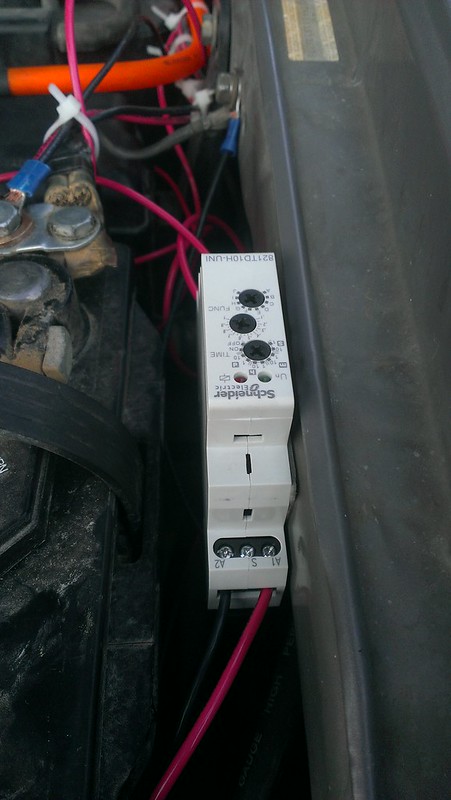dwh
Tail-End Charlie
-- The cable between the starter batteries and the camper batteries causes the battery bank with a lower voltage to draw down the other. This is the classic set up of all relay controlled dual battery systems. The trick is that rather than a small wire, I have a properly sized cable, so the camper batteries are able to draw down the starter batteries very quickly and thus recharge very quickly.
There's that (possibly) dodgy assumption again. See below.
all of the logic that I am using is covered on the Smart Gauge site
I referred to this a few posts back, but I'ma gonna do 'er agin.
http://www.smartgauge.co.uk/nosurge2.html
Where he says:
"We're not quite finished yet. The proponents of this false rumour usually state "one full battery and one flat battery" so that is the example I based the above on. They are obviously unaware that this state of charge does not cause the greatest current to flow.
The worst scenario actually occurs with a fully charged engine start battery and the auxiliary battery bank at around 40% charge state. The reason is that, although the terminal voltage falls as the battery approaches totally flat, the internal resistance rises. At 40% state of charge the internal resistance is considerably lower. The result in the above example would be that the initial current surge would be around 40 amps, and even that would only last a minute or so (thus discharging the engine battery by 40A * 1/60th hour = 0.7 amp hours) at the most until the surface charge on the auxiliary bank raised it's terminal voltage to that of the engine start battery. Once this had happened, the current would be negligible." [emphasis added - dwh]
Now, he's talking about connecting two batteries using a solenoid (SmartBank setup) but he's also NOT factoring in a running alternator. In your rig, by the time the the IBS ties the batteries, the alternator is up and running and so the current surge between main and aux banks would be even LESS than what he shows here in this example. Also, he's using 40% SoC in the example, but I see you say that your aux bank is usually around 75% SoC - so the surge would be even more less (parse that!)


